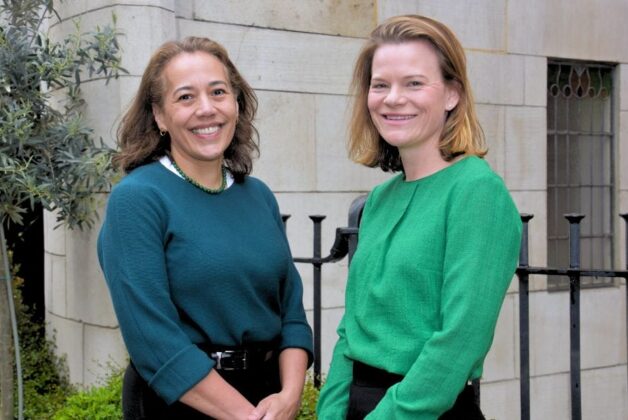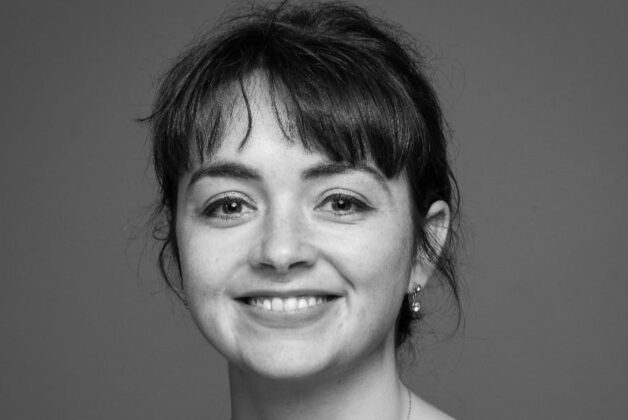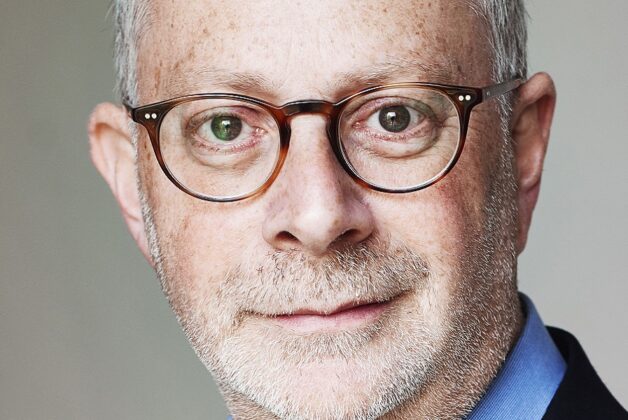Alistair Hardaker
Image: Lauren Broxton (Connor Walker)
Lauren Broxton’s leather designs have graced London Fashion Week and earned features in The BBC, High Snobiety and Notion. But over the past year, the Walsall-based fashion designer and educator has spent 20-30 hours a week on a very different project: fighting to save the Walsall Leather Museum.
In September, Walsall Council announced that Walsall College’s SEND provision for students would relocate to what is currently the Walsall Leather Museum. Councillor Adrian Andrew, Deputy Leader of Walsall Council said it was “committed to relocating Walsall Leather Museum to a more prominent and accessible location within Walsall town centre”, a move which would “expand the offer to include the Willenhall lock industry, our mining heritage and prominent figures from the area such as author Jerome K Jerome, and historian and intelligence officer Sir Harry Hinsley.”
As yet, no specific address or building has been publicly announced.
For Broxton, the campaign is deeply personal. Her work is inspired by Walsall’s unique leather trade heritage—the very history now at risk of losing its home. When the council announced plans to relocate the museum’s collection to make way for a college SEND provision, she mobilised her industry networks, social media following, and local community to mount a resistance.
Here, she talks about the tactics, setbacks, and sheer stamina required to lead a heritage campaign for an organisation you are not part of, and why the fight is worth it.
When did you first learn about the proposed closure, and what were your first practical steps in launching the campaign? How many hours per week did you spend on it initially?
I first picked up on news of the closure in October 2024, when the ‘relocation’ proposals appeared on the annual budget review public consultation.
A petition had already been launched, that I found out about through local news outlets so I began the campaign very organically and somewhat reactionary, to try and get as many signatures as we could. I then began to craft social media posts through my own business – which helped with exposure as I had developed quite a strong online following and community. Posting across multiple channels, I began to attract others who wanted to help and so early actions included meeting with various individuals across the arts, museums and social history sector and organising across our respective fields to rally as much widespread industry and community support as possible.
Given the urgent nature of the plans, we only had a short time in which to act but it’s safe to say it consumed my life for a good part of the year! Anywhere between 20-30 hours a week – I really took a ‘by any means necessary’ approach to it.
Which tactics have been most effective—petitions, public meetings, social media, media outreach? What made them work?
Social media has been critical to the campaign – it really helped us to get the message out there urgently and create a noise efficiently, aiding us in collecting a lot of signatures (nearly 7000) in a matter of weeks.
It also has a knock on effect of media picking up on the campaign. Local Democracy Reporters have been integral to the success of this – they will literally scour social media to pick up on local, emerging stories – and we’ve built strong links with them now so that they are great allies in covering the campaign as it unfolds. Naturally, this in turn attracts other media – affiliated radio and larger, national news outlets, so we’ve had coverage from The Guardian, Museums Association and BBC.
Another tactic that really helped was to rally industry contacts and reach out to new ones. My team and I used our networks to rally our respective contacts from the Leather Industry, Academia and Social History sectors with the aim of writing collective letters to council outlining the wider issue of closure, and what it meant for our industries.
This was one of the main actions that I think was integral to halting the plans initially, as it gave weight to our concerns by tying it in with wider industry needs and essentially getting some big names behind us. We have a local campaign group too that meet publicly and do a lot more face-to-face communication – which is helpful in locations like Walsall, where older populations might rely on traditional forms of media or not be particularly confident with technology.
Most of all, we have made sure we stay visible, keeping the matter highlighted in the media and amongst local community – whom I believe will really be the ones with the power to save it ultimately.

Which approaches failed to gain traction? What did you learn from them?
I think the hardest part has been mobilising the community locally which is very strange when you think about it, but there’s some context to that. Most people in Walsall have really strong feelings about the Museum and indeed historical connections to it. However, I feel like there is a collective sense of being battered down by local authorities over decades that they really feel quite powerless in being able to do anything about it. There’s a sense of political apathy, I think, and that the council will just carry on with their aims anyway, coupled with the fact that Walsall is a very working-class town. There is that sense of ‘get your head down and get on with it – don’t make a scene.’ So, where we may have garnered a lot of signatures, we’ve sometimes struggled to get the required numbers we need to submit to democratic services.
With the new arm of the campaign taking shape, we’ve changed tactics slightly. We’re doing a lot more in-person, face-to-face communication, public meetings, campaign groups where people can come and grab a cuppa, voice their ideas, but also get some help with things like writing to an MP or reaching out to councillors.
The Museum is part of a larger problem with the culture of our local politics, so it’s very important that we also use this opportunity to empower those locally to find their voice, use it and question those making critical decisions about the future of their communities.
How have you recruited and managed volunteers? What’s your approach to keeping people engaged over time?
Getting volunteers has been one of the easiest parts of campaigning!
As soon as word got round, I found many people coming to my aid, be that from the local community, political party members, those in the arts, museums, and heritage sector or from academia. I’m very fortunate to be from a part of the world where helping people is the social norm, so I had a wealth of people reaching out to offer their help.
Initially, we handled most of our work by meeting online and delegating roles and responsibilities to each of us based on our backgrounds – so I handled leather industry outreach and utilised my contacts in education. Dr Jenny Gilbert, a black country born social historian handled academic outreach whilst Vicky Roden – a very well-respected local artist handled museums and heritage connections and any artworks needed for protest and posters. Now, with a larger and growing campaign group, we meet every fortnight and delegate our roles similarly – those who have experience in working with legal and councils head up that task, for example. Essentially, we play to our strengths.
We also have a facebook group and utilise other communication platforms where we can post updates and things to action, as well as a google drive where we upload any documents that people might find helpful – such as committee minutes, public documents. We highlight the most relevant information so that people can fully understand the issues without having to trawl through council archives – this helps to engage people as it keeps things easy and accessible.
Which relationships have been most critical to the campaign and how did you build them?
First and foremost, our local democracy reporter Rachel Alexander has been phenomenal and an integral part of the campaign. She’s covered the story since it first unfolded and has been really dedicated to following up at every stage, getting it out there in local news outlets but also on platforms such as the BBC. Once that happens, it draws in other media such as tv and radio – and eventually national news organisations.
Our local MP Valerie Vaz has also been amazing and pro-active in pushing the issue in parliament, raising it in debate at Westminster Hall on 12th November 2025, as well as some of our local councillors.
In cases like ours, it’s very important we understand the political system and what actions we need to take. I have two local contacts who have been brilliant at that – Andy & Linda Boys. They’ve worked across the country in various councils and really understand the political and legal implications of how things work – they’ve really been integral to pushing for actionable change. Andy was also instrumental in setting up the living and working Willenhall Lock Museum in the 80s in neighbouring Willenhall (which closed in 2017), so he is well versed in navigating these kind of issues.
What takes up most of your time now, and what have you done to make the campaign more sustainable?
Initially, there was a period where I was juggling it all myself and therefore, it was all consuming: organising social media, outreach, protests, events, talks etc. We then obviously grew so that more and more people were actively involved but, in the critical space we are in now, that is obviously not sustainable.
I am still spending a lot of time on campaign work but it has become more streamlined and efficient by mobilising people who are willing and able to help and apply their own expertise, as well as implementing systems such as shared drives and meet-up groups. I still run my own business throughout all of this, as well as managing several contracts in leather & fashion education – so having good, collaborative networks and efficient systems in place is a must.
Because I have probably been the consistent face and voice throughout the campaign, my main commitment currently has been managing press, media and any committee representation, so that we have a clear and consistent message and spokesperson.
If the campaign succeeds and the museum remains open, how will you feel about the time and effort you’ve invested?
I’ve said it before and I’ll say it again – as exhausting as it has been, as impossible as it has seemed at times – the cost of what we are set to lose with Walsall Leather Museum closing is much higher than the cost of trying.
We are talking about 400 years of history and a unique cultural identity that cannot be replicated anywhere else. I don’t regret a single minute spent on the campaign, all-consuming as it has been.
If we succeed, I can’t imagine the sense of elation and relief I will feel. The campaign resonates with so many because it has so many different markers of importance – whether that be the resilience of regional communities, the importance Walsall’s Leather Heritage holds locally and as part of the wider U.K. craft heritage, or the importance of holding our elected leaders to account.




